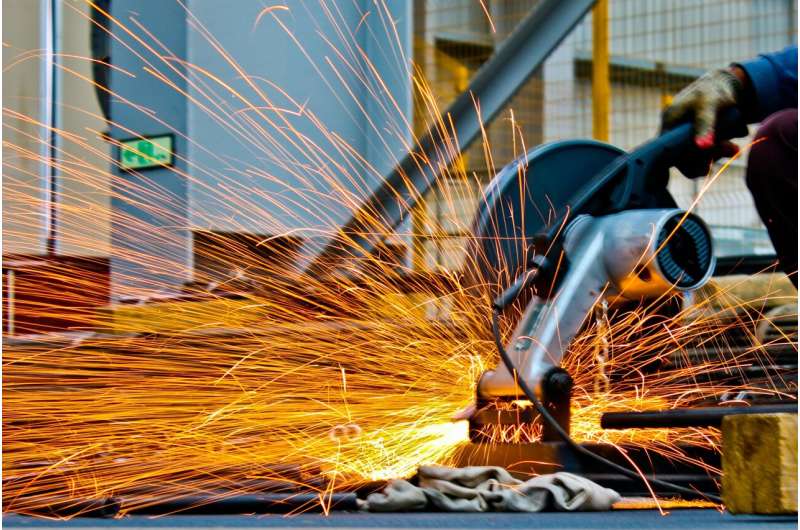Innovative electrolytes could transform steelmaking and beyond
The lifeblood of any battery is the electrolyte. It is the medium through which positively charged elements (cations) migrate en masse between the positive and negative electrodes. By this means, batteries discharge to provide energy and charge to store energy. Scientists call this an electrochemical process.
Electrolytes are central to the development of different electrochemical processes, as well. For example, they could be used in converting iron ore into purified iron metal or iron alloys. A challenge is that the electrolyte must remain stable under extreme operating conditions and avoid side reactions that reduce energy efficiency. The payoff would be that such a process could eliminate the energy-intensive blast furnaces used in steel production and thereby reduce greenhouse gas emissions.
That is the aim of the new Center for Steel Electrification by Electrosynthesis (C-STEEL), an Energy Earthshot Research Center.
In a recent paper, Argonne researchers report an innovative approach to designing a new generation of electrolytes for almost any electrochemical process. The paper is published in the journal Chem.
“With this approach, scientists should be able to develop electrolytes for not only electric vehicle batteries, but also the decarbonized manufacturing of steel, cement and various chemicals,” said Justin Connell, materials scientist at Argonne and a deputy director of C-STEEL.
The electrolytes for electric vehicle batteries typically are composed of a salt dissolved in a liquid solvent. For example, sodium chloride is a common salt, and water a common solvent. The salt provides the electrolyte with both cations and negatively charged elements (anions)—chlorine in the case of common salt. In batteries, the salt and solvent compositions are much more complicated than that, but the key to their functionality is that the electrolyte is charge neutral because the number of anions and cations are balanced.
Past research has focused on changing the solvent to different compositions using a single salt at varying concentrations. “In our view, the best path forward to improved electrolytes is mainly through different anions for the salt,” Connell said. “Changing the anion chemistry could lead to both more energy-efficient electrochemical processes and a longer-lasting electrolyte.”
In most electrolytes today, solvent surrounds the working cation as it moves between electrodes. In conventional lithium-ion batteries for electric vehicles, as one example, that cation would be lithium; and the anion, a fluorine phosphate (PF6).
To design new electrolytes for different applications, the Argonne team is looking at pairing the working cation with one or more different anions in the electrolyte. When anions partially or fully replace the solvent to surround the cation, scientists refer to these as contact ion pairs.
However, with innumerable possible contact ion pairings, how can one identify the best match of anions with working cations in a specific application? To that end, the team is pursuing experiments complemented by computations using machine learning and artificial intelligence.
The aim is to develop a set of design principles that yield the best contact ion pairs for the electrolyte suited to the demands of steelmaking as part of C-STEEL.
“With these principles in mind, we hope to discover an affordable, long-lasting electrolyte that yields the most efficient process for making iron for steel,” Connell said.
These same principles would apply to electrolytes for other decarbonized electrochemical processes, as well as lithium-ion batteries and beyond.
In addition to Connell, authors include Stefan Ilic and Sydney Lavan.
More information:
Stefan Ilic et al, Anion-derived contact ion pairing as a unifying principle for electrolyte design, Chem (2024). DOI: 10.1016/j.chempr.2024.07.031
Chem
Argonne National Laboratory
Citation:
Innovative electrolytes could transform steelmaking and beyond (2024, September 24)
retrieved 25 September 2024
from https://techxplore.com/news/2024-09-electrolytes-steelmaking.html
This document is subject to copyright. Apart from any fair dealing for the purpose of private study or research, no
part may be reproduced without the written permission. The content is provided for information purposes only.

Comments are closed